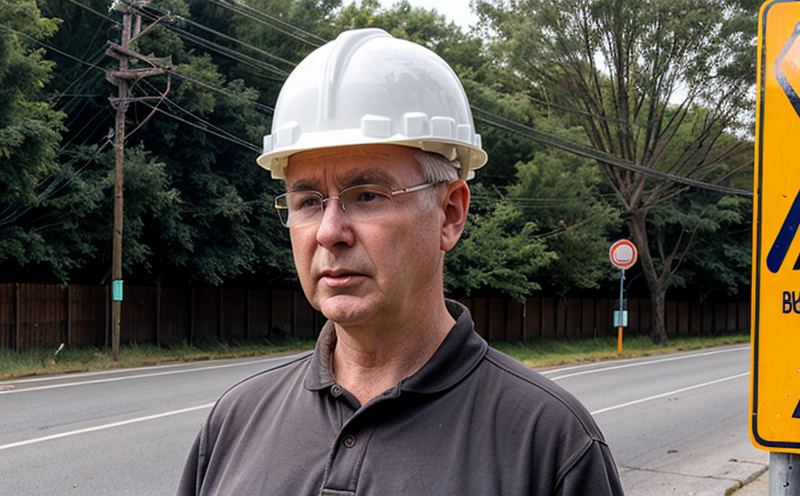ASTM F2105 Outdoor Noise Testing for Construction Equipment
The ASTM F2105 standard is a critical tool for ensuring compliance with environmental and community noise regulations, particularly in the construction industry. This outdoor noise testing method evaluates the operational sound levels of construction equipment during typical usage conditions. The primary purpose of this test is to provide data that can be used to assess whether equipment meets specified noise emission limits set by regulatory bodies.
Compliance with ASTM F2105 is essential for quality managers, compliance officers, and R&D engineers who need accurate and reliable measurements to ensure their products meet international standards. This test focuses on real-world conditions rather than controlled lab settings, providing a more realistic assessment of noise emissions in the field.
The testing procedure involves measuring sound levels at various distances from the equipment during typical operating conditions. The standard specifies the required equipment and procedures for conducting these measurements accurately. Compliance with ASTM F2105 is not only about meeting regulatory requirements but also about enhancing brand reputation by demonstrating a commitment to environmental responsibility.
Testing conducted according to ASTM F2105 helps construction companies avoid legal penalties, improve public relations, and potentially reduce the risk of negative media coverage. By understanding and adhering to this standard, businesses can ensure that their equipment is not only functional but also environmentally responsible.
| Parameter | Description |
|---|---|
| Microphone Type | Condenser microphone with a flat frequency response in the range of 125 Hz to 8 kHz. |
| Sound Level Meter Range | 0 dB(A) to at least 130 dBA, with an accuracy of ±1.0 dBA for levels between 70 and 125 dBA. |
| Distance from Equipment | Measuring points should be placed at a distance of 3 meters (10 feet) in front, behind, to the left, and right of the equipment. |
The ASTM F2105 standard is widely recognized for its comprehensive approach to outdoor noise testing. It provides a standardized method that ensures consistent results across different testing environments. This consistency is crucial for quality assurance teams who rely on accurate data to make informed decisions about product design and manufacturing processes.
Compliance with ASTM F2105 also offers significant competitive advantages in the market. By meeting this standard, construction equipment manufacturers can differentiate their products from competitors who may not adhere to these stringent noise control measures. This differentiation is especially important given the increasing emphasis on environmental sustainability and corporate social responsibility.
In addition to regulatory compliance, ASTM F2105 testing helps construction companies reduce operational costs by identifying potential sources of excessive noise that could lead to equipment wear or premature failure. Early identification and rectification of these issues can save significant maintenance and replacement costs over the lifespan of the equipment.
Why It Matters
Environmental noise testing is crucial for several reasons, primarily related to compliance with environmental regulations and public health considerations. Noise pollution has been linked to various health issues such as stress, sleep disturbances, and hearing damage. By conducting ASTM F2105 outdoor noise testing, construction companies can help mitigate these risks by ensuring that their equipment operates within acceptable noise emission limits.
The standard also plays a vital role in safeguarding the reputation of manufacturers who adhere to it. Positive brand perception is essential for building long-term customer relationships and maintaining market share. Compliance with ASTM F2105 demonstrates a company's commitment to environmental responsibility, which can be a significant factor in consumer decision-making.
Furthermore, meeting this standard helps construction companies avoid legal challenges and potential financial penalties associated with non-compliance. Regulatory bodies are increasingly enforcing noise control measures, and failure to comply could result in costly fines and legal action. By conducting ASTM F2105 testing, businesses can proactively manage these risks.
The importance of this standard extends beyond regulatory compliance. It also contributes to the overall well-being of communities by reducing ambient noise levels. This is particularly relevant for construction projects that are located in residential or commercial areas where noise pollution can significantly impact local residents' quality of life.
Competitive Advantage and Market Impact
- Differentiation: Meeting ASTM F2105 standards can help manufacturers differentiate their products in a crowded market, attracting environmentally conscious consumers.
- Cost Savings: By identifying noise sources early through testing, companies can reduce maintenance and replacement costs over the equipment's lifespan.
- Regulatory Compliance: Ensuring compliance helps avoid legal challenges and potential financial penalties associated with non-compliance.
- Brand Reputation: Adherence to this standard enhances brand reputation, fostering long-term customer relationships and market share growth.
Use Cases and Application Examples
| Industry Sector | Description of Use Case |
|---|---|
| Construction | Testing noise levels emitted by bulldozers, cranes, and other heavy machinery to ensure compliance with environmental regulations. |
| Paving | Evaluating the sound emissions of pavers during paving operations in residential areas to minimize disruption. |
ASTM F2105 outdoor noise testing is widely used across various construction sectors, particularly in environments where noise pollution can have a significant impact on community well-being. For instance, during paving operations in residential areas, the test ensures that sound emissions are kept to a minimum, reducing disruption and potential complaints from local residents.
The use cases for ASTM F2105 testing extend beyond construction sites. It is also applicable to other industries where noise control is essential, such as manufacturing facilities, public works projects, and infrastructure development. In these sectors, compliance with ASTM F2105 helps ensure that equipment operates within acceptable noise limits, contributing to a healthier environment and better working conditions.





